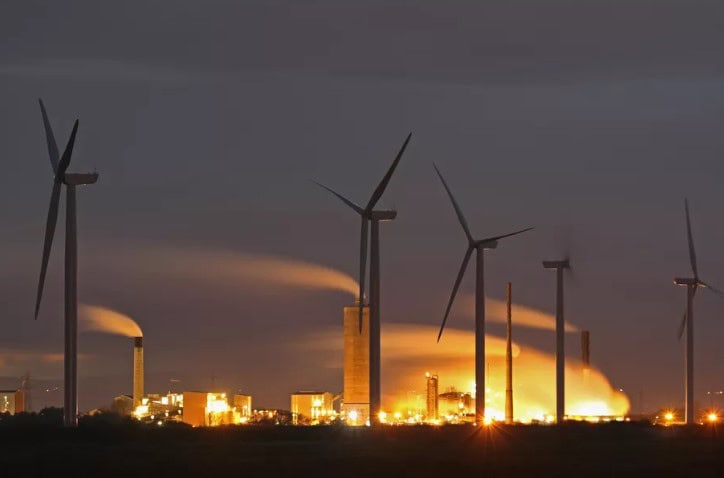
Europe’s electricity future could be both green and consistent, even as climate change warms the continent, according to a new study. That’s good news for Europeans who are trying to shift their power grids toward wind and solar power and away from traditional power plants.
The study, published today in the journal Joule, investigates how the effects of climate change on wind, sunlight, and temperature might change electricity supply and demand in the future. Researchers led by graduate student Smail Kozarcanin at Aarhus University in Denmark primarily looked at the electricity generation side of the story, including how much wind and solar power feeds into the grid. They found that if a renewable grid can handle the shifts in sun and wind today, it should be able to handle them in the future — even if it gets really warm.
There’s a catch, however: the researchers didn’t look at how extreme weather exacerbated by climate change might, say, topple power lines in storms or incinerate them in wildfires. Paul Deane, a renewable energy researcher at University College Cork in Ireland who was not involved in the study, calls the results good news — with a word of caution. “To understand that Europe is relatively resilient to these climate change impacts in terms of weather-driven resources, that’s quite good,” he says. But, he adds, “it doesn’t mean the power system gets a clean bill of health.”
To figure out how a renewable electrical system would fare in a warming world, the researchers used historical data and climate projections to figure out how supply and demand could shift. They created a virtual grid spanning the entirety of Europe and estimated how many wind turbines and solar panels would be needed to satisfy historical electricity demand. Previous research suggested that in an ideal renewable grid for Europe, roughly 80 percent of the electricity would come from wind power on average, and 20 percent from solar. So that’s the ratio they used.
Kozarcanin and his team used six different climate models to investigate three different futures: one where the world sticks to the Paris climate agreement that allows temperatures to climb only 1.5 degrees Celsius; one where high carbon taxes help rein in emissions to a lesser degree; and the nightmarish, business-as-usual scenario where we continue pumping out fossil fuel emissions unchecked.
They were especially interested in projections about wind speeds, sunlight, and temperature, and they calculated that, overall, electricity demand would likely drop over the course of this century because of decreased demand for heating in a warming world. The study calculates that electricity demand for air conditioning will likely increase compared to today, particularly for countries around the Mediterranean. But that increase is offset by the decreased demand for electric heating across Europe, Kozarcanin tells The Verge.
One key measure the researchers looked at was how much Europe would have to lean on traditional power plants to fill gaps in the renewable grid on, say, a cloudy or still day. Their surprising finding was that this didn’t change much across the different climate futures. In fact, weather variability from year to year had a bigger effect on the grid’s ability to meet electricity demand than long-term changes to the climate did. In their analysis, some nuclear, fossil fuels, or other on-demand power generation will remain part of Europe’s energy calculus, no matter what the future brings.
Of course, this is a very simplified scenario. The researchers didn’t try to project how a growing or shifting population, for example, would change electricity demand because that would introduce another variable. Instead, they just assumed there would be a steady population, which isn’t realistic. They also didn’t look at changes to grid or shifts in the number or location of wind turbines and solar panels. And the almost unbelievably low electricity demand for AC could make the results hard to apply elsewhere. “The results are actually pretty robust and resilient when it comes to the European power system,” Deane says. But, he adds, “I would wonder how transferrable they are to other power systems in the US or parts of Australia, for example.”
Still, the results could help with planning and managing a renewable grid in a warmer future. Barring infrastructure-destroying floods or wildfires, if a renewable grid is designed to hold up to the fluctuations of supply and demands we see today, it should still work in the future.
